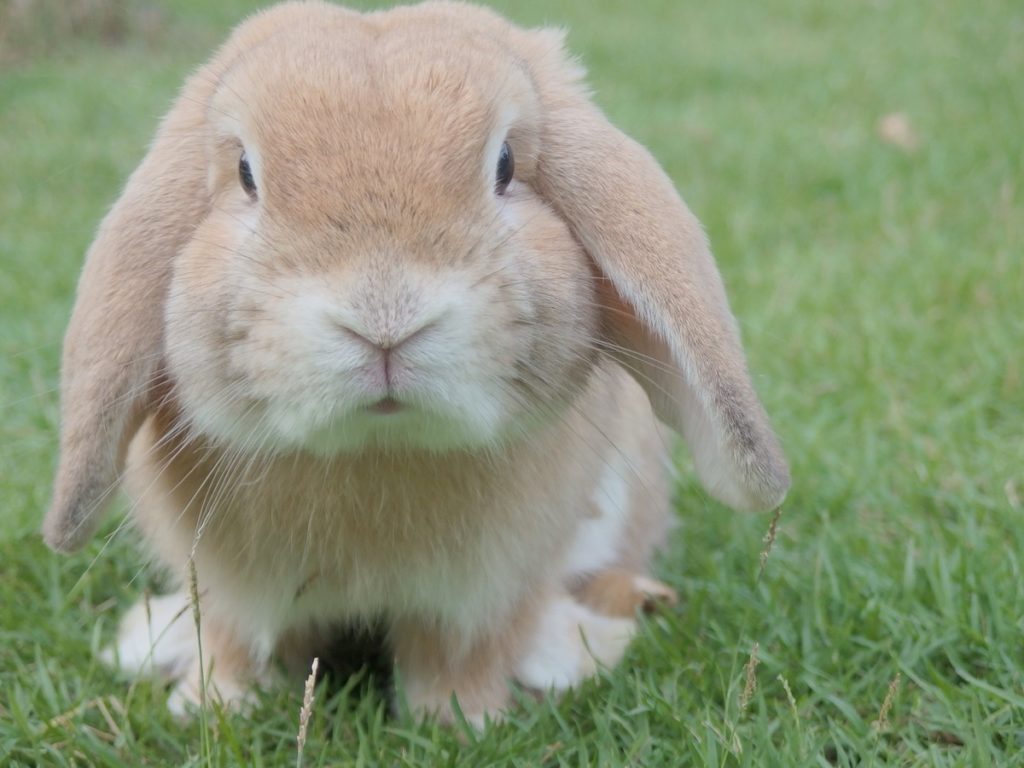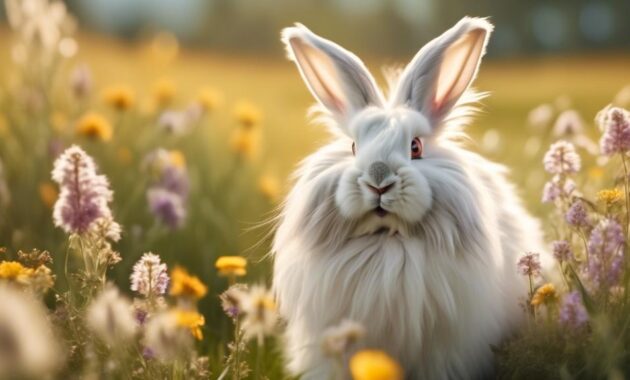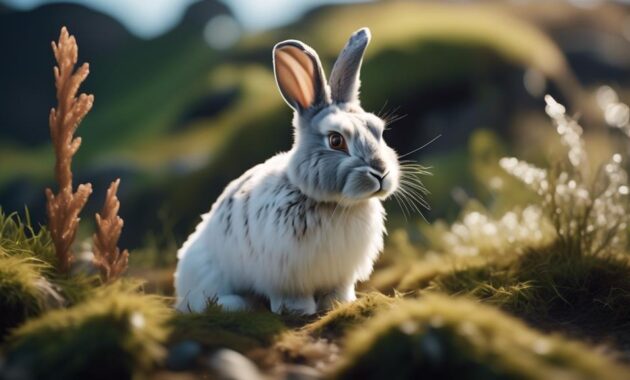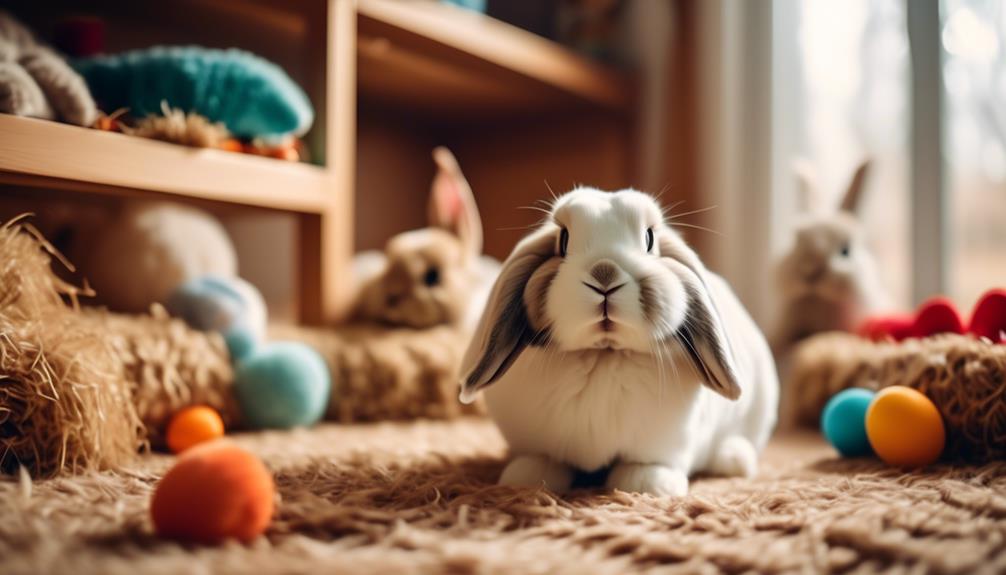
Are you considering getting a pet rabbit but aren’t sure which breed to choose?
Picture this: You walk into a local pet store and are immediately captivated by the sight of a small, fuzzy creature with floppy ears and a playful demeanor. You can’t help but wonder, ‘What kind of rabbit is that?’
Well, my friend, you have just stumbled upon one of the most adorable breeds known as the Holland Lop rabbit. But what makes them so special? What are their unique characteristics and care requirements?
In this article, we will unravel the secrets of these irresistible creatures, leaving you itching to learn more about the fascinating world of Holland Lop rabbits.
Key Takeaways
- Holland Lop rabbits are small and compact, weighing between 2-4 pounds.
- They have a lifespan of 7-14 years and are suitable for various living situations, including apartments and houses.
- Holland Lops have a curious and energetic temperament, making them great pets for families and first-time owners.
- Regular grooming, including brushing their rollback variety coat, is essential for their health and to prevent loose hair ingestion.
Holland Lop Rabbit Characteristics
Holland Lop rabbits are known for their distinctive physical characteristics and charming appearance. These adorable rabbits have a wide and short body, giving them a compact shape. One of their standout features is the crown, a puff of fur at the back of their head.
Their large fur-covered ears fall on either side of their head, adding to their endlessly charming looks. The Holland Lop has a rollback variety coat that’s dense and medium in length. It requires regular brushing and light maintenance to minimize loose hair ingestion and prevent intestinal blockage.
During molting season, it’s important to brush them more frequently. Overall, these rabbits are a true delight to behold.
The History and Origin of Holland Lop Breed
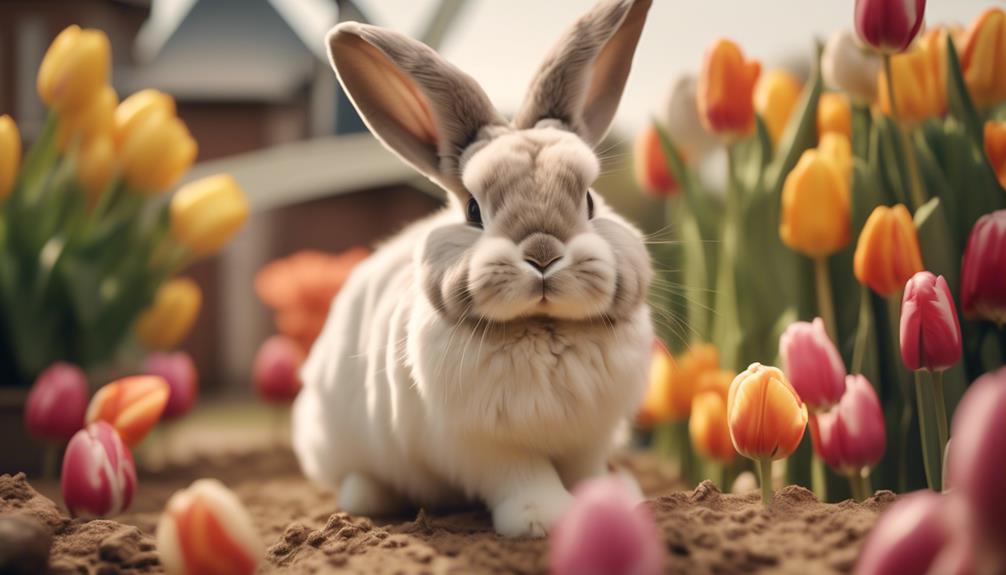
The Holland Lop breed has a fascinating history and origin that dates back to the 1950s in the Netherlands. It was created by a breeder named Adriann de Cock, who wanted to combine the French Lop and the Netherland Dwarf Rabbit.
Initially, the breed had erect ears, but de Cock bred them with an English Lop to achieve the distinctive floppy ears that are characteristic of the Holland Lop today.
The breed was recognized by the Netherlands Governing Rabbit Council in 1964 and by the American Rabbit Breeders Association in 1976. One of the defining features of the Holland Lop is the crown on its head, which adds to its adorable charm.
Holland Lop Rabbit Description
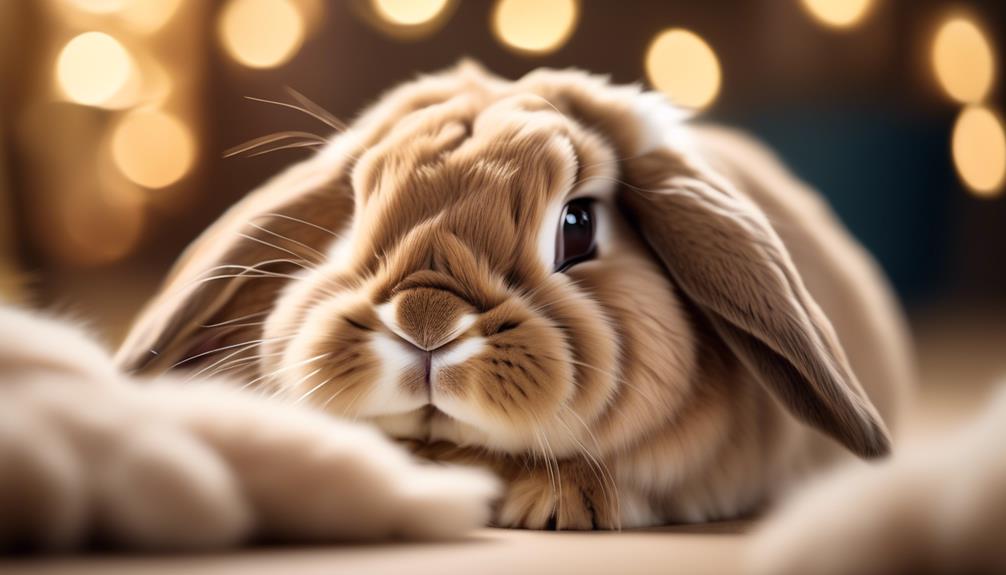
With its wide and short body, the Holland Lop rabbit boasts a compact shape that’s endlessly charming. This dwarf rabbit weighs about 4 lbs and has a distinctive puff of fur at the back of its head known as the crown.
The Holland Lop’s most notable feature is its large fur-covered ears that fall on either side of its head, giving it an adorable and endearing appearance. The breed has a rollback variety coat, which is dense and medium in length. Regular brushing and light maintenance are necessary to keep their coat in good condition.
Holland Lop Rabbit Coat Care
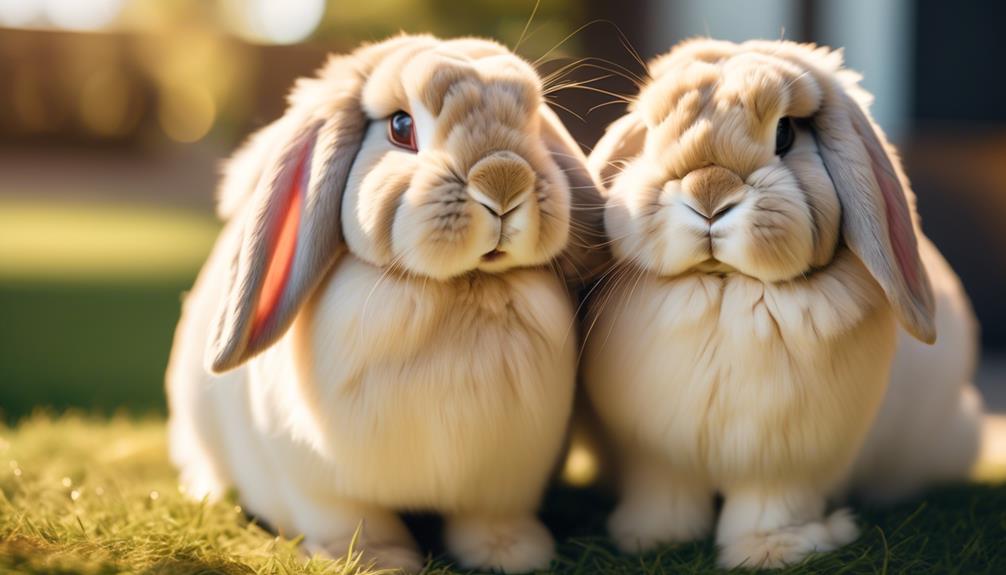
To properly care for the coat of a Holland Lop rabbit, regular grooming and maintenance are essential. Here are four important tips to ensure your rabbit’s coat stays in top shape:
- Brush regularly: Use a slicker brush or fur splitter to gently brush your Holland Lop’s coat on a weekly or bi-weekly basis. This helps minimize loose hair ingestion and prevents intestinal blockage.
- Focus on molting season: During molting season, which occurs twice a year, increase the frequency of brushing to help remove loose fur and prevent matting.
- Avoid bathing: Bathing rabbits can cause stress and should be avoided. Instead, use a moistened cotton ball to clean any dirty spots on their fur.
- Regular veterinary check-ups: Regular visits to the vet are crucial for maintaining your rabbit’s overall health, including their coat. Ensure they receive proper vaccinations and a balanced diet of hay, fresh vegetables, and pellets.
Health and Wellness of Holland Lop Rabbits
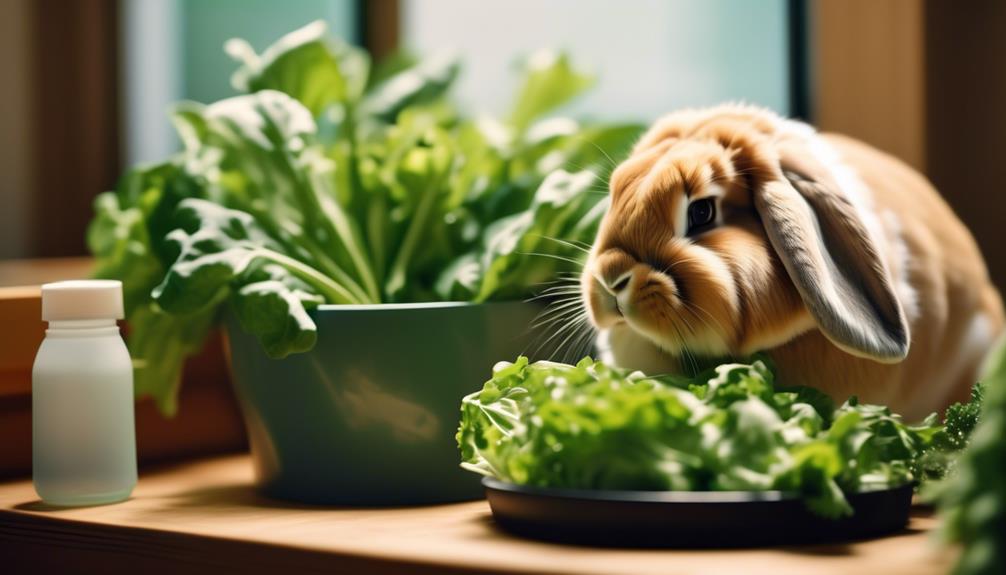
Regular grooming and maintenance are crucial for ensuring the health and wellness of Holland Lop rabbits, especially when it comes to their coat care. These adorable rabbits have a dense and medium-length rollback variety coat that requires regular brushing and light maintenance.
It’s recommended to have a weekly or bi-weekly grooming session using a slicker brush or fur splitter. This brushing not only helps to keep their fur clean and tangle-free but also minimizes the ingestion of loose hair, which can lead to intestinal blockage.
During molting season, it’s important to brush the rabbits more frequently to help remove the excess hair.
Additionally, it’s essential to provide regular veterinary check-ups, vaccinations, a balanced diet of hay, fresh vegetables, and pellets, as well as a safe and clean environment for their overall well-being.
Holland Lop Rabbit Diet and Nutrition
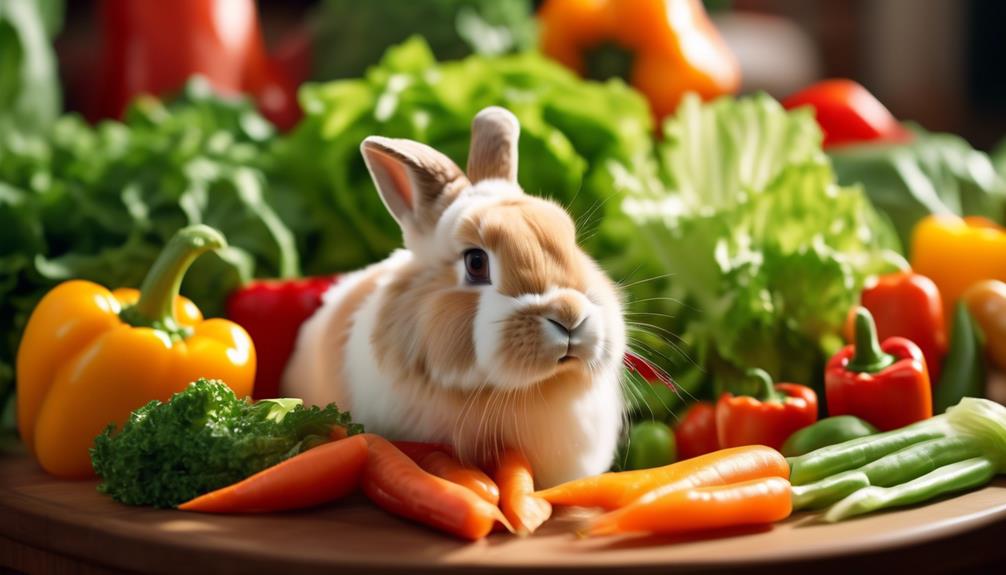
Holland Lop rabbits require a balanced diet and proper nutrition to maintain their overall health and well-being. Here are four important aspects of their diet and nutrition:
- Hay: Provide unlimited access to high-quality hay, such as Timothy or orchard grass. Hay aids in digestion, prevents dental issues, and keeps rabbits mentally stimulated.
- Fresh Vegetables: Offer a variety of fresh vegetables daily, such as leafy greens (e.g., romaine lettuce, kale), carrots, and bell peppers. Vegetables should make up about 10-15% of their diet.
- Pellets: Choose high-quality pellets specifically formulated for rabbits. Feed them in limited quantities, about 1/8 to 1/4 cup per day, depending on the rabbit’s size and weight.
- Water: Ensure fresh, clean water is always available. Use a water bottle or a heavy ceramic bowl to prevent tipping.
Remember to introduce new foods gradually and monitor your rabbit’s weight and overall health.
Creating a Safe Environment for Holland Lop Rabbits
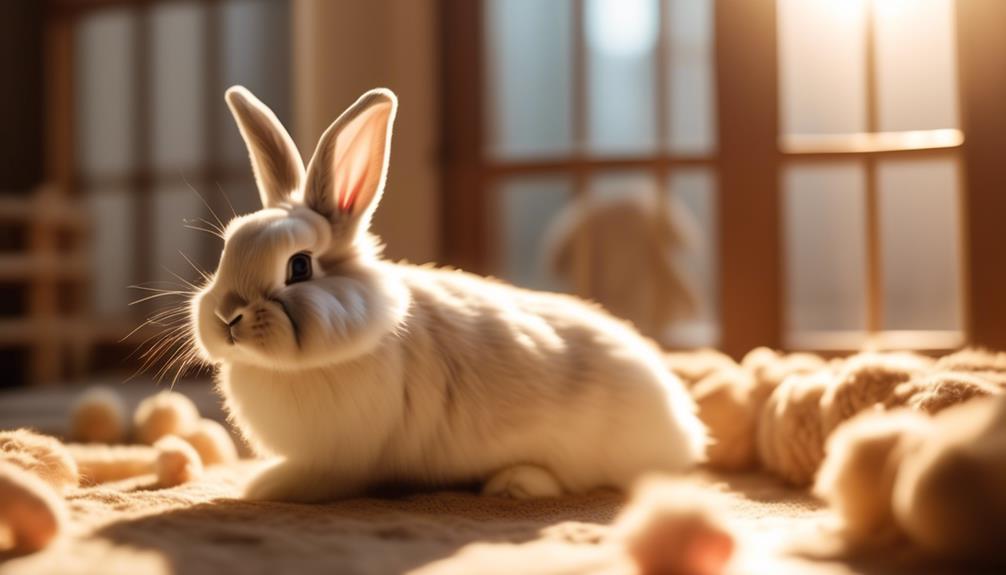
When ensuring the well-being of your Holland Lop rabbit, it’s crucial to create a safe environment for them to thrive in.
Start by providing a spacious and secure enclosure. Holland Lops are active and curious, so make sure the enclosure has enough room for them to hop around and explore.
Remove any toxic plants or small objects that they could ingest. Cover electrical cords and secure them out of reach to prevent chewing accidents.
Keep the temperature in their environment between 60-70°F to avoid overheating or chilling.
Provide fresh water in a spill-proof bowl and ensure a balanced diet of hay, fresh vegetables, and pellets.
Regularly clean the enclosure to prevent the buildup of bacteria.
Holland Lop Rabbit Grooming Tips
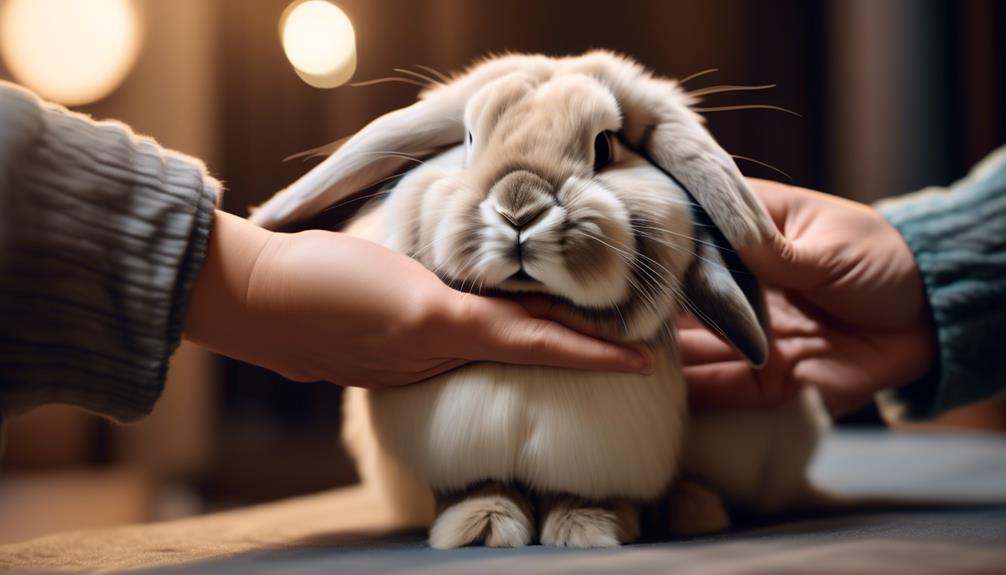
To keep your Holland Lop rabbit looking its best, regular grooming is essential. Here are some grooming tips to help you maintain your furry friend’s appearance:
- Brush their coat: Holland Lops have a dense, medium-length rollback variety coat that requires regular brushing. Use a slicker brush or fur splitter during a weekly or bi-weekly grooming session. This helps minimize loose hair ingestion and prevents intestinal blockage.
- Pay extra attention during molting season: Rabbits shed their fur during molting season, so it’s important to brush them more frequently during this time to remove loose fur and prevent matting.
- Avoid bathing: Bathing can cause stress for rabbits, so it’s best to avoid it. Instead, use a moistened cotton ball to clean their fur if it gets dirty.
- Regular veterinary check-ups: Schedule regular check-ups with a veterinarian to ensure your Holland Lop’s overall health and well-being. They can also provide vaccinations and offer advice on proper care.
Common Health Issues in Holland Lop Rabbits
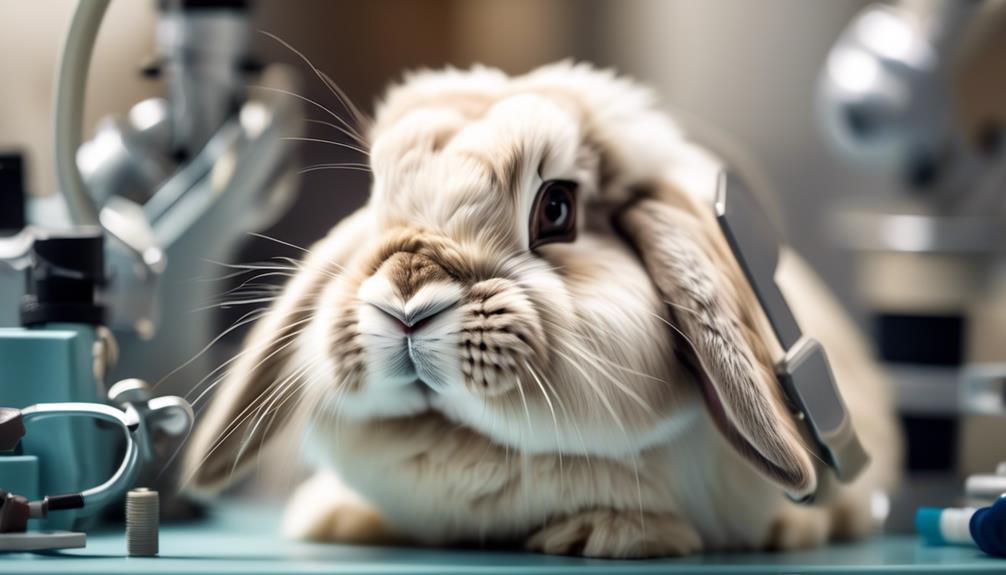
One common health concern for Holland Lop rabbits is dental issues that can affect their overall well-being. Due to their small size and compact body shape, these rabbits are prone to dental problems such as overgrown teeth and malocclusion.
Their teeth continuously grow throughout their lives, and if not properly worn down, they can become too long and cause pain, difficulty eating, and even abscesses. Regular dental check-ups by a veterinarian experienced with rabbits are essential to detect and address any dental issues early on.
Additionally, providing your Holland Lop with appropriate chew toys, such as wooden blocks or timothy hay, can help promote natural tooth wear and prevent dental problems. Ensuring a proper diet, consisting of high-quality hay and limited pellets, is also crucial for their dental health.
Holland Lop Rabbit Behavior and Temperament
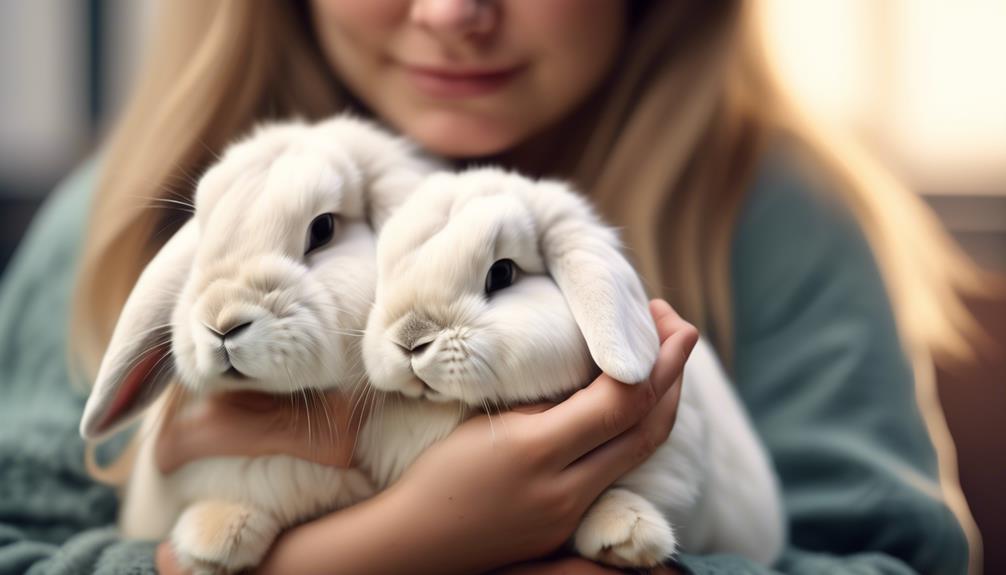
Holland Lop rabbits exhibit a friendly and inquisitive temperament, making them a delightful choice for pet owners. Here are some key characteristics of their behavior and temperament:
- Affectionate: Holland Lops are known for their loving nature and enjoy being cuddled and petted by their owners.
- Playful: These rabbits have a playful side and love to explore their surroundings. They enjoy toys and interactive activities.
- Curious: Holland Lops are naturally curious creatures and will often investigate new objects and environments, making them entertaining companions.
- Gentle: These rabbits are generally gentle and well-suited for families with children. They have a calm demeanor and rarely show aggression.
With their friendly and gentle disposition, Holland Lop rabbits make wonderful pets that will bring joy and companionship to your home.
Holland Lop Rabbit as a Pet: Tips and Considerations
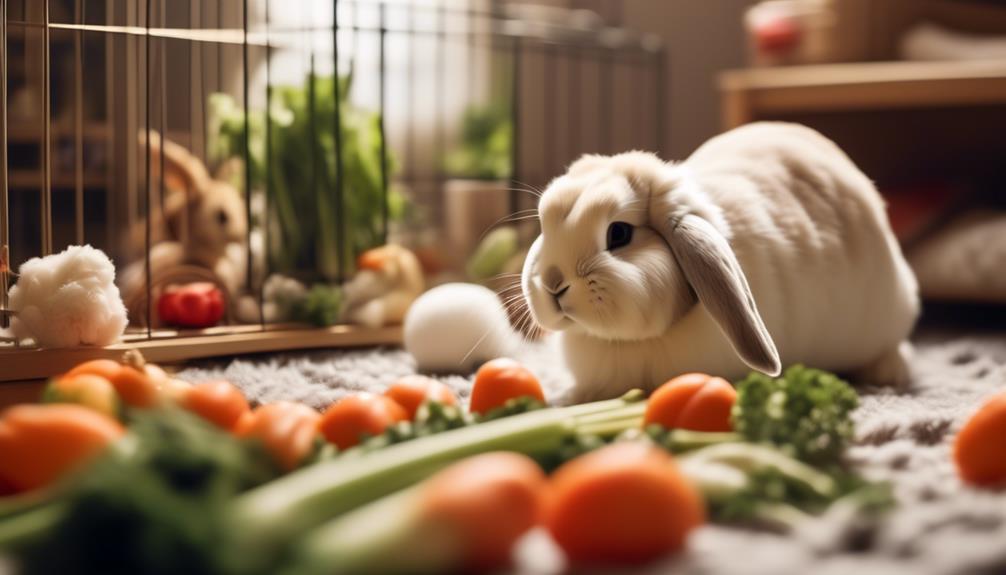
When considering a Holland Lop rabbit as a pet, there are important tips and considerations to keep in mind. Here is a table summarizing the key points:
| Tips and Considerations |
|---|
| 1. Provide a spacious and safe enclosure for your Holland Lop. |
| 2. Regularly groom your rabbit’s coat to prevent hair ingestion and intestinal blockage. |
| 3. Schedule regular veterinary check-ups and vaccinations to ensure your rabbit’s health. |
| 4. Feed your Holland Lop a balanced diet of hay, fresh vegetables, and pellets. |
| 5. Avoid bathing your rabbit as it can cause stress, use a moistened cotton ball to clean dirty fur. |
Frequently Asked Questions
How Much Exercise Does a Holland Lop Rabbit Need?
Holland Lop rabbits need regular exercise to stay healthy and happy. They should have at least 3-4 hours of supervised playtime outside their enclosure each day to hop, explore, and stretch their legs.
Are Holland Lop Rabbits Good With Other Pets?
Holland Lop rabbits can be good with other pets if properly introduced and supervised. Monitor their interactions and make sure they have their own space. Always prioritize the safety and well-being of all animals involved.
What Is the Average Cost of Owning a Holland Lop Rabbit?
The average cost of owning a Holland Lop rabbit can vary, but you can expect to spend around $20 to $100 for the initial purchase, and then additional costs for food, supplies, and veterinary care.
Can Holland Lop Rabbits Be Litter Trained?
Yes, Holland Lop rabbits can be litter trained. Start by providing a litter box with rabbit-safe litter. Place some of their droppings in the litter box to encourage them to use it.
Do Holland Lop Rabbits Require Any Special Dental Care?
No, Holland Lop rabbits don’t require any special dental care. However, it’s important to provide them with a balanced diet of hay, fresh vegetables, and pellets to promote good dental health.
What are the differences between Holland Lop rabbits and Belgian Hares?
When it comes to the differences between Holland Lop rabbits and Belgian Hares, it all comes down to size and appearance. Holland Lops are known for their small, compact bodies and distinctive floppy ears, while Belgian Hares are larger, more slender, and have a more sleek, athletic appearance, making them a real rabbit showstopper.
Conclusion
So there you have it! Now that you know everything there’s to know about adorable Holland Lop rabbits, you can confidently consider them as pets.
From their charming appearance to their curious and energetic temperament, they make great companions for singles, families, and first-time owners.
Just remember to provide them with regular grooming sessions and a proper diet to ensure their well-being.
So go ahead and fall in love with these delightful floppy-eared creatures!

